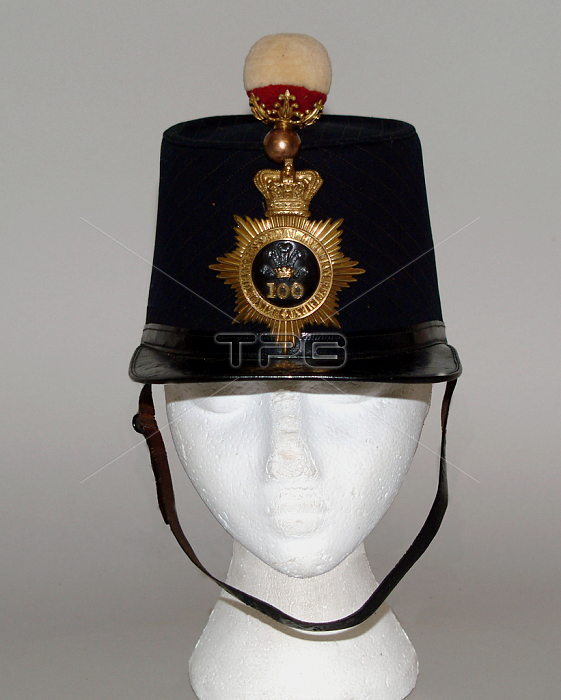
5921760 Shako, 1861-1869 pattern, worn by Lieutenant W Richie, 100th (Prince of Wales\'s Royal Canadian) Regiment, 1864 by British School, (19th century); National Army Museum, London; (add.info.: Shako, 1861-1869 pattern, worn by Lieutenant W Richie, 100th (Prince of Wales\'s Royal Canadian) Regiment, 1864 circa. The word ?shako? originated from a Hungarian word meaning peaked cap, which was a part of the uniform of the Hungarian hussar of the 18th century. From 1800 onwards, the shako became the standard military headress of most regiments in nearly all armies. It retained this dominant position until the mid-nineteenth century, when spiked helmets began to appear in the armies of various German states, and the more practical kepi (a cap with a flat circular top and visor) replaced it for all but parade wear in the French Army. However in some regiments the shako was still being worn as late as 1914. The Highland Light Infantry and Scottish Rifles of the British Army retained shakos for parade dress until World War One, and the Swiss and Dutch armies wore shakos even for field wear until 1916.); by National Army Museum .
| px | px | dpi | = | cm | x | cm | = | MB |
Details
Creative#:
TOP27771398
Source:
達志影像
Authorization Type:
RM
Release Information:
須由TPG 完整授權
Model Release:
No
Property Release:
No
Right to Privacy:
No
Same folder images:

 Loading
Loading